When troubleshooting kombucha problems it’s important to know what healthy kombucha is supposed to be like. Using your senses and observation you’ll be able to know that your kombucha is safe and healthy.
Kombucha is a beneficial tonic beverage that has many health benefits. Rich in natural detoxifiers, Kombucha fights free-radical damage in your body, energizes you, and gives you many probiotics to help with digestion, brain health, and fighting the bad bacteria and viruses in your environment. Plus you can make Kombucha at home using just tea and sugar so that these awesome health benefits come to you for just pennies a glass. See my directions for making Kombucha at home here.
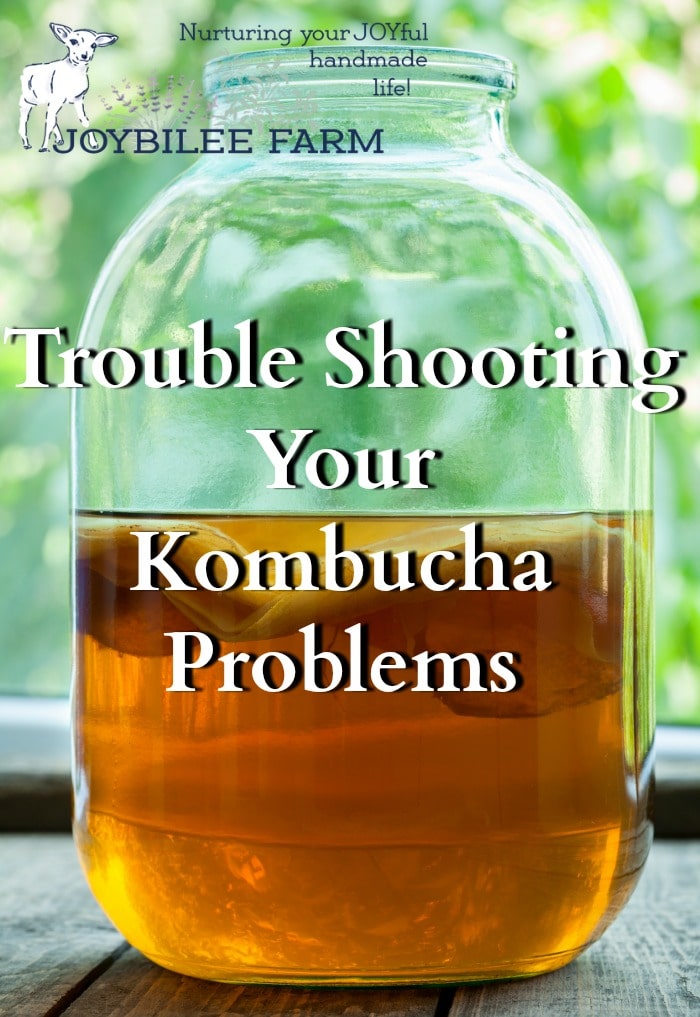
Here’s a quick chart for proportions of tea/sugar and starter for different size batches of Kombucha:
|
Container Size |
Amount of Tea | Amount of Sugar | Amount of water | Cups of Starter |
| 1 quart/litre | 1 ½ tsp. loose tea /2 tea bags | ¼ cup | 3 ½ cups | ½ cup |
| 2 quarts/litre | 1 T loose or 5 bags | ½ cup | 7 cups | 1 cup |
| 1 gallon | 2 T loose or 8 bags | 1 cup | 13 1/2 cups | 2 cups |
Second Fermentation method:
Many people enjoy fizzy kombucha. This fizziness is obtained by making a second ferment, where the carbon dioxide is prevented from escaping. When making the second fermentation you can add 1 cup of fruit or fruit juice for every 7 cups of finished Kombucha, which is basically replacing the starter that you remove with fruit juice. The second ferment is bottled in individual serving sizes. These second fermentation bottles should be capped tightly to allow the fizz to build up. See more about making fizzy kombucha here.
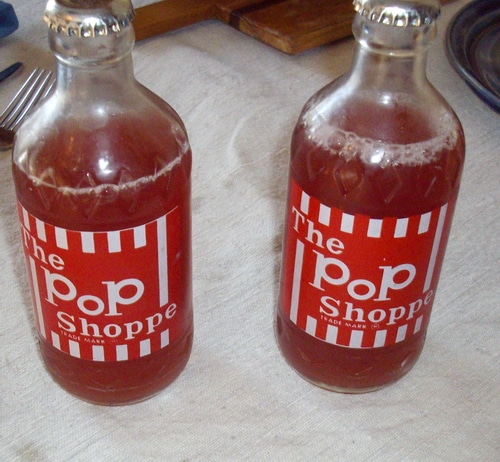
Conditions necessary for perfect Kombucha:
Kombucha is a fermented drink and is very easy to make in the right environment.
To make kombucha you need:
- clean jars and utensils,
- non-chlorinated water
- strong tea
- real sugar
- 70F temperature
- 4 to 7 days
If you give kombucha these conditions, your kombucha growing career will be free of problems. However, if any of these elements are missing, you may have a few issues with your Kombucha brewing. Some problems can be fixed, but other kombucha problems are irreparable.
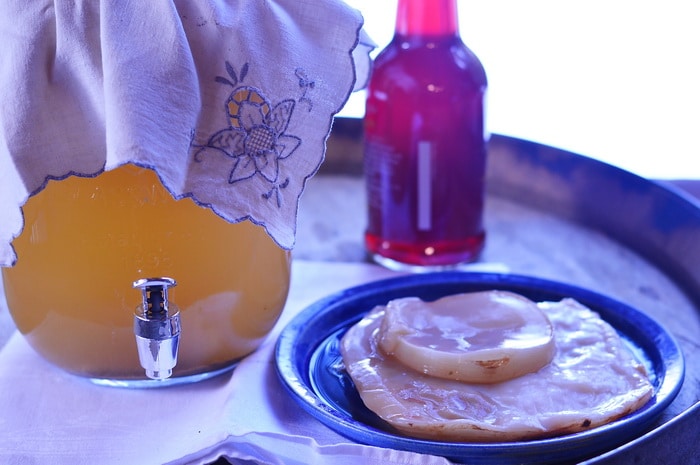
Kombucha troubleshooting guide
When making Kombucha you are dealing with a live, acidic, probiotic culture. As long as the culture can colonize the solution of tea and sugar quickly, it will successfully compete without any bad bacteria, like molds, in the environment. However, if the colonization is too slow, bad bacteria can take hold of your Kombucha solution. This can be a serious problem that makes your kombucha unsafe for human consumption.
But not all kombucha troubles are serious. Some are just inconvenient. In this kombucha troubleshooting guide, I’ll take you step-by-step through the diagnosis of typical kombucha problems so that you know if your kombucha is safe to drink, and also what you can do next time to avoid kombucha troubles.
Here are 6 things that can go wrong when you are brewing kombucha and some suggestions of how to avoid kombucha trouble in your next batch.
1. My Kombucha is too acidic and tastes like vinegar
You left your Kombucha too long to ferment. Properly fermented Kombucha should be between a pH of 4 and a pH of 2. If it gets lower than 2, it will taste like vinegar. A lot of bottled Kombucha has this vinegary quality, as raw Kombucha continues to ferment even after bottling, even at refrigerator temperatures. The sooner it is drunk after it has reached its ideal pH the better it will taste.
You can use Kombucha that tastes vinegary for the starter on your next batch of Kombucha. You can also use it in place of vinegar in salad dressings, marinades, and sauces. You can add it to bone broth to help extract the vital minerals from bones and cartilage, as well. You can use vinegary kombucha in a recipe that calls for vinegar or lemon juice, like a jerky recipe. You can also use acidic kombucha in all-purpose cleaning solution recipes, in place of vinegar.
Vinegary Kombucha is safe to consume, it just tastes a bit sourer than is pleasant to the taste.
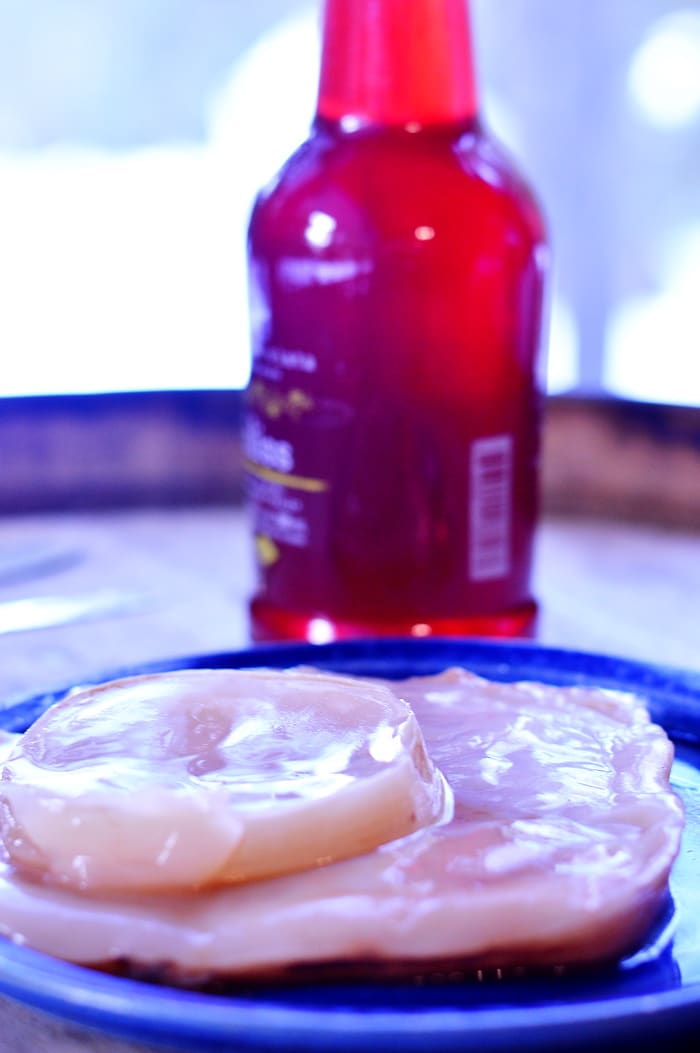
2. My Kombucha mushroom is brown on top but doesn’t have any mold.
This is normal. The Kombucha mushroom will grow darker and darker as it thickens, with each new batch of Kombucha. It will also grow baby scobies (mushrooms) on top of the original scoby. These can be pulled apart, gently, to start a new batch of Kombucha, or to give to a friend. You might even use a layer of your kombucha scoby to make a DIY kombucha starter kit for a gift.
3. My Kombucha has hairy black, orange, green, or red mold on top of the scoby.
While most kombucha is strong enough to fight off the invasion of bad bacteria, sometimes things can go wrong. If you find a mold of any color on top of your kombucha scoby or in the top or sides of your fermenting jar, you’ll need to take drastic measures. Do not consume any kombucha coming from this batch. Do not use the scoby to make a new batch.
Most likely the problem is that your Kombucha got too hot or too cold during the first ferment. This can happen if the tea was still warm when it was added to your fermentation jar. In a wood-heated house, nighttime temperatures can drop too low to keep the probiotic bacteria active in the fermentation jar.
Another possible cause is contaminated utensils or fermentation vessels. If you are fermenting sourdough bread, cheese, or other fermented food near your kombucha there can be cross-contamination between the kombucha and the other ferments.
Throw out the entire batch including the scoby. Get a fresh scoby from a friend and start again, with well-boiled water. Sanitize all containers and utensils before making your next batch of kombucha. This will help prevent troubleshooting kombucha with this problem again.
Move your fermenting Kombucha to a clean cupboard away from other sources of contamination. Cover with a clean linen handkerchief or tea towel to keep out dust. Do not use cheesecloth as the weave is not tight enough to exclude pests.
4. My Kombucha hasn’t changed in 5 days. It is a pH of 7 and the scoby is at the bottom of the jar.
Your tea was too hot when you put your scoby and starter into the jar and it killed the Kombucha colony. For troubleshooting kombucha with this problem, start again with a new scoby and new starter Kombucha.
5. My Kombucha smells or tastes bad – not vinegary, just bad.
Don’t drink it. Throw it out. Start again with a fresh scoby and fresh starter. Don’t risk drinking anything that might have bad bacteria in it. Kombucha should taste slightly acidic, with a fresh, sparkling taste – a bit like apple cider vinegar in honey. There should be no putrid smell or taste.
6. My scoby is black, not moldy just black.
Your scoby has died. Throw it out and any batches that were made with it, and obtain a fresh scoby. Your scoby may be old – they have a lifespan. You may have started the batch with tea that was too hot.
This is what a healthy kombucha scoby looks like:
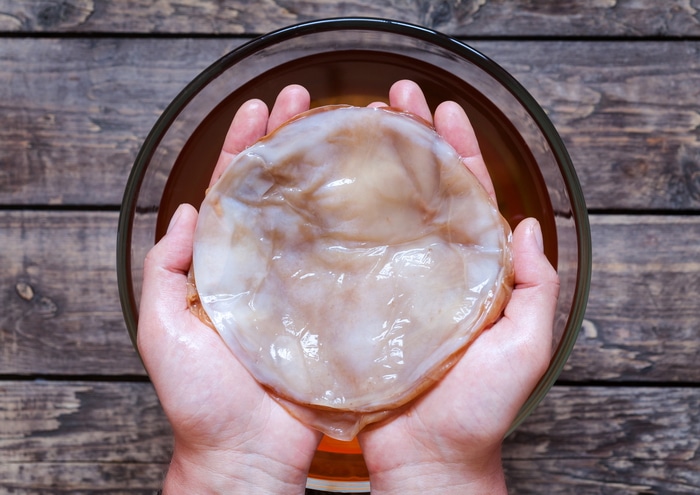
Err on the side of caution:
These tips are suggestions for getting the most from your batches of Kombucha. Always use your own common sense when making fermented foods in your own kitchen. Never risk your own or your family’s health by consuming something that you believe has gone “off”. Err on the side of caution.
Because of the acidic nature of Kombucha, it is very rare for anything to go wrong with properly made batches of Kombucha. If you are careful to clean and rinse your utensils and jars, use an acidic starter – either a previous Kombucha batch of vinegar and a clean and active scoby, you will have many, many years of happy Kombucha making and consuming.
Your active kombucha culture should give you Kombucha of the correct pH of 2.5 to 4 within 5 to 7 days. You should have baby scobies forming on the top of the jar or the top of the mature scoby. These can be separated from the mother culture and used to ferment fresh batches of Kombucha.

Kombucha Tip
After you’ve made kombucha for several months your kombucha scoby will thicken with layers of the mother scoby.
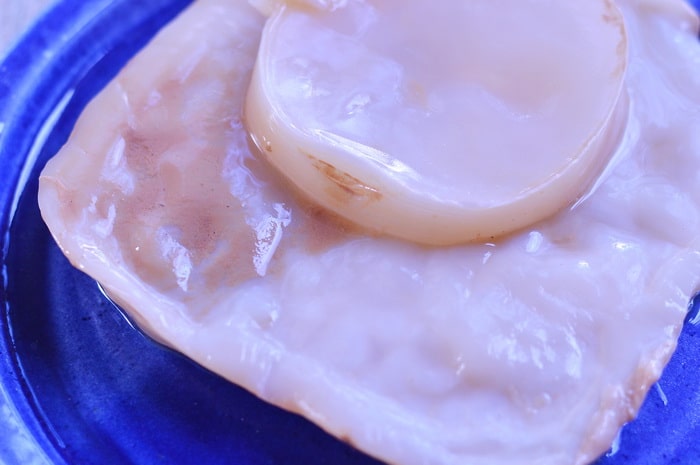
These can be separated from the mother scoby by peeling off the layers. Save these baby scobies in a “kombucha hotel”. Cover the scobies with that vinegary kombucha and cover with a normal jar lid. You can leave them at room temperature on the kitchen counter or in a cupboard or pantry. This way you’ll always have healthy scobies to begin a new batch, help you troubleshooting kombucha, and give to a friend who may need a fresh start. You can even make Boochie Salt Scrub using these instructions.
Your Turn:
What are your successes, or failures, with Kombucha? Looking at these troubleshooting steps and options, did we miss something? Is there another troubleshooting option you would add? Leave a comment.
Articles in this Joybilee Farm Kombucha Series
Secret super-healing power of Kombucha and how to grow your own — Part 1
Making your own super-star healing tonic in sufficient quantities for your family – Part 2
Super-star secrets to help you break the soda habit — 2nd ferment Kombucha – Part 3
What can go wrong? Trouble Shooting your Kombucha problems – Part 4 (This post)
6 Ways to incorporate Kombucha into your lifestyle – Part 5



I made 3 litres of kombucha, and today i burped them (divided over 3 bottles) and often they erupt to the extend that the flavouring bits go everywhere + bubbles of liquid. Now 2 of thr 3 bottlesi tasted and they taste good. The 3rd one smelled off and tasted bad. I haven’t binned it yet but i probably will (I read your advice)
Now the strange thing is that the one that is off had the same ingredients as one of the other bottles and that one seems fine (i used ginger and apple and honey) i put more honey in one i remember, so maybe that could be it?
Just would like to found out what aent wrong because now have to been a liter of kombucha 🙁
Thank you for the advice and comment section
Best,
Donna
Hi, David. I don’t sterilize my kombucha containers unless I have a problem with mold. The containers are coated with good bacteria and that is usually enough to keep any bad bacteria in check. When you sterilize you have to build up the good bacteria again and you can get an overload of bad bacteria before this happens, ruining your scoby. Yeast is part of the scoby culture, so not a concern. As the acid increases the yeast will die back. Bubbles can build up if the chance for carbondioxide to escape is sealed off. As long as your brew is getting more acidic as time passes, there’s no reason to be concerned. I pull the lower part of the scoby off when it starts taking up too much space in the container. Often the old scoby will just sink and a new one form across the top of the brew. That’s a good indication that you can remove the old scoby.
I’m running a gallon jug & half-gallon ‘hotel/?” or just 2nd smaller jar, anyway..
Source was from a green tea that turned into the most lovely vinegar; I rescued the scoby, and after a few batches, the vinegar taste has pretty well diminished.
Ran about 5 weeks of black tea, then going to an oolong (half-black/half green) & sugar, 2nd ferment to fizz & infuse.
This time: the top layer is whitish-tan like the pix, so little concern there. but I’ve got a good nose & got a faint whiff of what smelled faintly like bread/yeast along with the regular odors only in my gallon jar. -anything to be concerned for?
– also: i top off about 10% watered down honey for 2nd ferment (one week) (along with tumeric & ginger in individual bottles) seems to mellow better than sugar syrup. only tea & sugar in first ferment.
I’ve seen others on Reddit & their pix are very bubbly, also liquid (even flavored) is clearer than mine.
Also: how often shoudl the scoby be pulled w/ dregs /liquid & the brewing jar re-sterilized?
Lastlly: how often should I pull off the lower layers of scoby? I’m about 5 months in & only separated the original for each jar.
Just start a new batch with the scoby and a cup of the kombucha you already have. It might take a couple batches to get the flavor you want. Use the vinegary kombucha in ways you might already be using vinegar — in salad dressings, make horseradish, mustard, ketchup. You can even use it to make fire cider. It is full of good probiotics.
Hi, I’m a newbie to kombucha making. We started our brew 3 days ago. We decided to do a taste test and it already it tastes like vinegar (….not drinkable). It does have a new thin scobie layer on top.
Can you suggest what might have happened? Should we throw it out and start again?
Many thanks.